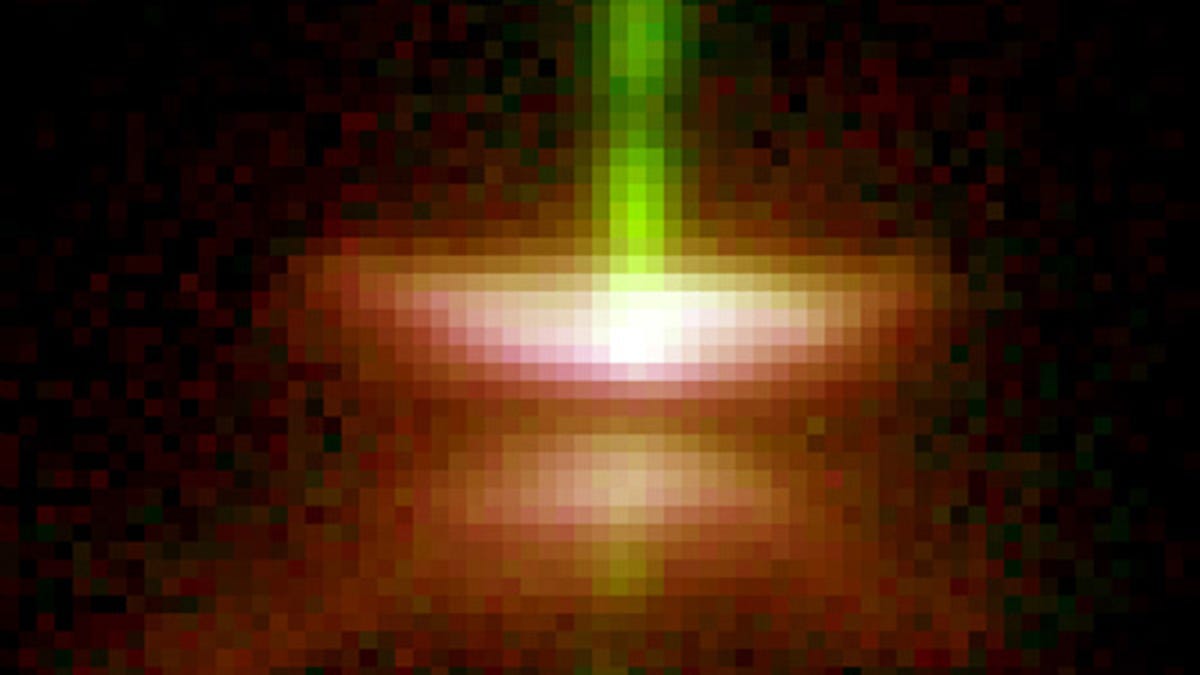Help NASA find where planets are born
NASA has turned to crowdsourcing for help in its search for embryonic planetary systems that the Hubble can study.

Hubble image of a young stellar object disk around a star, spanning 64 billion kilometres.
(Credit: NASA/Hubble/STScI)
NASA has turned to crowdsourcing for help in its search for embryonic planetary systems that the Hubble can study.
Crowdsourcing, scientists are increasingly finding, is an efficient means of conducting busywork. Whether its sequencing genomes, designing RNA, deciphering HIV proteins or cataloguing galaxies, the old axiom proves true: many hands do indeed make light work.
NASA has just launched a new project that will bring the power of crowdsourcing to finding embryonic planetary systems tucked away in the data collected by the Wide-field Infrared Survey Explorer (WISE) mission.
Using a tool called Disk Detective, launched via Zooniverse, anyone can look at images taken by the WISE telescope and catalogue disks. What the researchers are looking for is dust-rich disks — places where planets are born.
"Planets form and grow within disks of gas, dust and icy grains that surround young stars, but many details about the process still elude us," said NASA Goddard Space Flight Centre astrophysicist Marc Kuchner. "We need more examples of planet-forming habitats to better understand how planets grow and mature."
WISE was launched in December 2009 to perform an astronomical survey of the entire sky in infrared and, during its 10-month mission, captured 1.5 million images. Dust disks appear as round, bright patches in the infrared spectrum as they absorb the light of their stars and re-radiate it as heat.
However, there are a lot of objects in space that glow in the infrared spectrum, including galaxies, interstellar dust clouds and asteroids. By far the best method of classifying them is to study each image with the human eye, which can detect differences and anomalies with far greater accuracy than an automated program.
In Disk Detective, citizen scientists watch a short, flipbook-style animation of an infrared artefact and classify it according to simple, multiple-choice criteria. Each animation will be viewed by multiple people, decreasing the margin for error. NASA are looking for two types of planet nurseries: young stellar object disks, younger than five million years, containing large quantities of gas and often found near young star clusters; and debris disks, older than five million years, which contain little gas, but belts of rocky and icy debris.
"Through Disk Detective, volunteers will help the astronomical community discover new planetary nurseries that will become future targets for NASA's Hubble Space Telescope and its successor, the James Webb Space Telescope," said chief scientist for NASA Goddard's Sciences and Exploration Directorate James Garvin.
You can participate in Disk Detective through the Zooniverse website here.
Via www.jpl.nasa.gov

